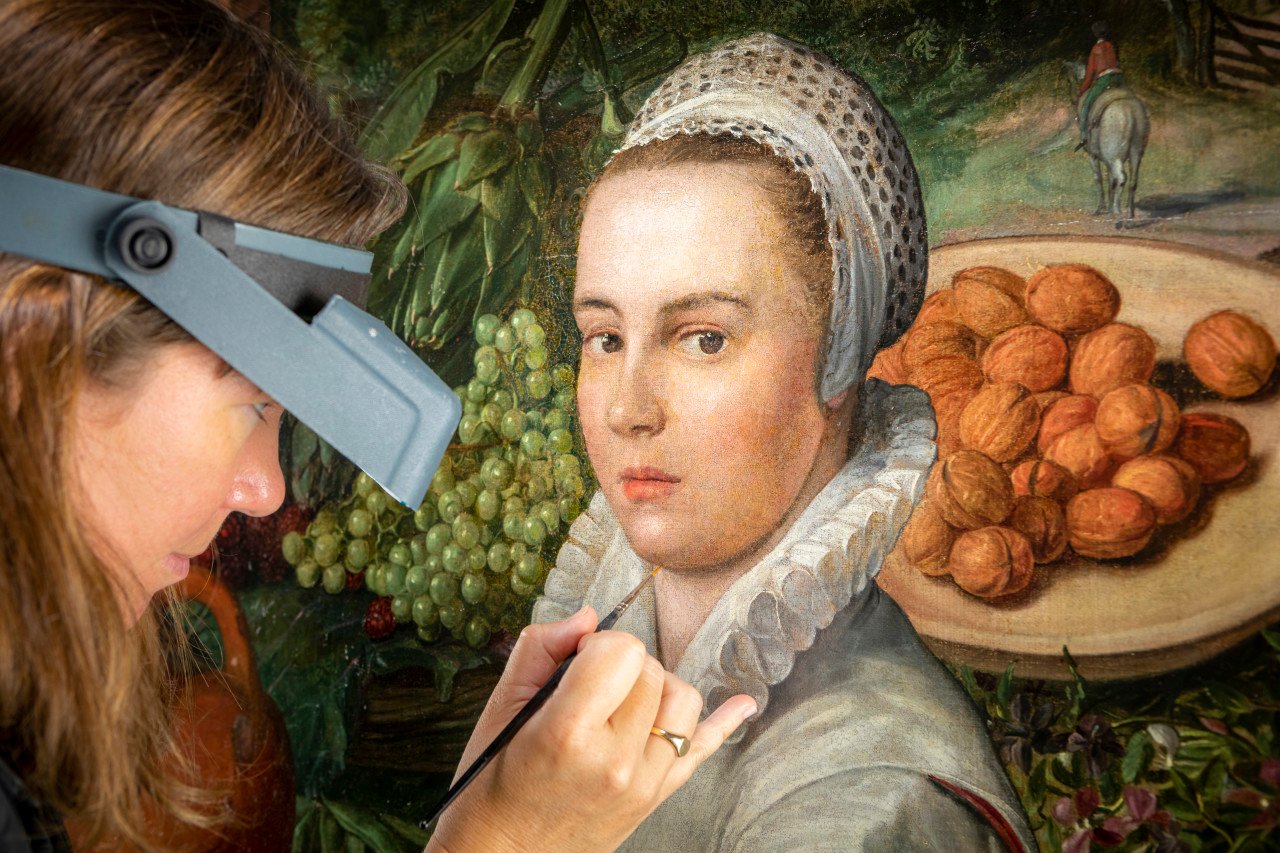
She once smiled, but now the subject of a centuries-old painting titled The Vegetable Seller is scowling, thanks to the work of art restorers who say that’s the way she’s supposed to be.
This week, experts at the conservation charity English Heritage revealed the results of a two-year restoration effort, which uncovered new clues about the mysterious unsigned painting that lived in the storerooms of the Audley End House in southeast England.
Conservators removed layers of overpainting, done at some point after the painting was completed, that edited the vegetable merchant’s stoic expression into a more gleeful one.
The Vegetable Seller. Photo: Christopher Ison/English Heritage. Courtesy of the Audley End House.
“More and more of her face was revealed—we realized she wasn’t meant to be smiling at all,” Alice Tate-Harte, a conservator at English Heritage, told CNN. “She actually had quite a serious expression.”
The reappearance of the subject’s original visage does more than just provide insight into the artist’s intention, though. It may point to the artist’s identity too.
Tate-Harte explained that the subject’s expression was characteristic of the work of Dutch painter Joachim Beukelaer, who lived from 1533 to 1574. Technical analysis dated the artwork to this same era, suggesting that Beukelaer himself may have painted the piece.
The conservators also restored the painting’s original colors and removed the top register of the canvas, which was likely added in the 19th century to make the artwork fit in a square frame. “It seems quite a crazy thing to do,” Tate-Harte told the Guardian. “Why not find a frame that fitted?”
“But,” the conservator went on, “this did happen an awful lot in country houses. Conservation wasn’t really established back in the 19th century so people had a lot more freedom to do these things.”
Now, for the first time in 60 years, The Vegetable Seller is on view again at the Audley End House. It’s been much longer than that since it was shown as the artist intended it.